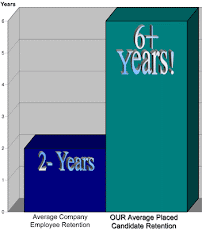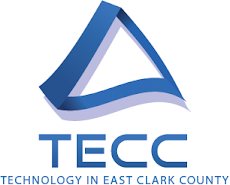Thursday
The Importance of Grooming Future Technology Leaders
By Gary Perman, published in CIO Magazine, July 2008
During an economic slowdown, businesses conventionally shed talent to reduce overhead. Despite the infusion of talent to the employment pool, many companies hunt for skilled workers at a frenzied rate and, surprisingly, cry that they can’t find the talent they need.
One reason for this contradiction is that many employers have not groomed and trained employees for larger roles.
Now they see the chasm created between employees and management. And they face yet another challenge: losing valuable employees to advancement opportunities at other companies. Recession or not, employees are jump ship for better opportunities.
Lack of advancement is one of the primary reasons for employee turnover in a company; it’s a well known fact exploited by headhunters who looking to “poach” disenchanted employees stuck in a dead-end job. When I ask employees and business leaders what they look for in a new opportunity, rarely do I hear “money” as the reason someone considers leaving their employer. The answer is almost always the lack of “career advancement opportunities.”
“I have left a job and have known many to leave their jobs because the hope for advancement was limited or non-existent,” says Pete Murray, formerly a technology service manager with Goodyear. “It just doesn't have to be that way!”
Small firms feel the pain, too, particularly when they begin to grow. Brian Dixon, health IT manager at Regenstrief Institute, an Indianapolis healthcare organization, says he and his colleagues tried for years to explain the risk to top management, but only now are they starting to listen. “We started with an employee survey of our programmers, analysts, software engineers, project managers, and IT support/helpdesk folks. We asked a lot of questions on the survey including staff satisfaction (job, morale, if one is listened to by others, compensation, if the organization is a good place to work), management (e.g., our mgmt team have made decisions that positively affect the org, respond to internal issues appropriately, leadership), training and skills (access to opportunities for improvement, do you have the tools needed to do your job), equity (I am treated fairly), communications (too little, too much), environment (harassment, diversity). For each area we used a 5 point likert scale to measure responses.
this brought the issue to the surface very quickly. Then we had several manager meetings to discuss the outcomes of the surveys, and a committee to work on solutions,” he says. “Lots of dialogue later, we are now working to change annual reviews to include career paths, and top management is listening to our ideas on how to help foster an environment that allows employees to grow into new roles to stem the tide of unhappy campers
I’ve often been asked, if this is such a widespread, common issue, why do companies shed their training experts during tough times? The simple answer is that executives believe they must drive costs down; everything else is secondary, as far as they’re concerned. Pressure from investors to see a return on their investment—no matter what the cost to the overall health of the organization— also drives executives to these short-sighted conclusions. Amazingly, 60 percent of all companies have no succession planning of any kind, according to the Society of Human Resources Management.
Some companies recognize this danger and proactively work on methods to solve the problem. At Portland, Ore., software firm Coaxis, executives recognized a specific gap in their internal staff development, including leadership development and succession planning. They have since developed a plan and a program to address these issues.
Coaxis is building these capabilities on the fly. It started a leadership and management development program and is working with director-level employees, with subsequent phases for managers, supervisors and high-potential employees planned. “I don’t think we are an example of a company that currently exhibits best practice but rather one in which management has recognized the need and has put a strategic HR department in place to do the planning and execution necessary to achieve best practice.” said Mary Carvour, director of human resources for Coaxis.
Before Owens Corning shut down three divisions due to the housing industry decline last year, Tony Friday, then-vice president of sales and marketing of the Homeowners Services Division, implemented a performance management system that rewards all employees, regardless of title or position in the company. At the beginning of each year, every employee works with their supervisor to develop individual goals and metrics which support the organization's goals for the year. If the employee meets or exceeds their goals, they receive a bonus, generally in the form of a percentage of their annual salary or wage. If the company meets its goals, all employees receive additional compensation. If they are not meeting their goals, their supervisor is expected to meet with them for coaching. If they still are under performing, the employee is let go. ”The functional costs associated with high turnover can kill your business and sends the wrong message to customers and job seekers,” Friday says. “Rewarding for the right behaviors is the key to any incentive compensation plan.”
Friday’s emphasis was on bringing in people with the right skills. One success was creating a university-style, in-house training program that gave the employee a career path and helped create an aspirational culture within the organization. An added bonus of these universities is a partnership with local community colleges or universities, which help employees gain credits toward a degree. “We identified high performers within our departments and then put them on a performance track,” Friday said. “We worked to bring them up, focusing on their knowledge gaps and skills, such as increased training in software, programming, networks and team leadership skills. That meant putting them on a four-year plan to bring them up the ranks. Other Owen Corning divisions soon took notice—the success of the program created a buzz throughout the organization and created a positive culture. Career advancement was taking place where before, it was stagnant. My focus is always on people. IF you treat people well, they will take care of your customers. I Implemented moral boosting events …BBQs for employees and their families once a quarter, added a massage bay, and Java Day. “People from other divisions began looking inside our division and wanted to get in rather than our division employees wanting to get out,” Friday said.
Another example, Tony explains “ When we switched from Timberline Software to SAP. We brought in our people for internal focus groups to find out the affects of this transition on our customers, our employee work load and our work groups. We selected a designated ‘champion’ in each SAP team to oversee its implementation – this champion was the teams go to person. We sent this champion to Toledo for some special training in Kaizen Workstream. Kaizen is a lean manufacturing process that works even in a service industry. This process created a great amount of employee buy in, because employees opinions were valued. We looked at how this transition into SAP was going to impact an employees workload, and developed an internal help desk for employee support.” This process contributed to the success of invidual employees not only as positive retention building, but to reduce succession gaps.
Tips to reduce management gaps in your company:
1. Look for shortfalls. If a manager or executive were to leave the company tomorrow, is there someone who can step in and take their place? If not, you have a potential gap.
2. Evaluate whether every individual is pulling their weight and adding value. Has each supervisor identified subordinates who are motivated by career advancement?
3. Identify high-performing employees who exhibit characteristics that justify advancement.
4. Seek employees who exhibit the ability to tackle additional responsibilities or leadership traits.
5. Establish career paths. Creating effective career paths requires two components; knowing the requirements for advancement to the next level, and creating a clear definition of the skills necessary.
6. Deliver high-quality succession training programs, which align with business objectives. Take a hard look at the programs offered. How well do they align with the two universal goals of every executive; increasing revenue and cutting costs? Clearly, any training that improves employees’ critical skill sets will add value to the organization. So will compliance programs and other mandated training initiatives, since they allow you to stay in business.
7. Mold employees by offering a mentorship program. Training time is expensive. Combine training programs and development assignments into experiences that focus on developing specific skills. This can help shorten the learning curve necessary for success. An in-house mentor can save a company a tremendous amount of expense both up front and in the long run.
8. Help employees develop their careers by allowing them to transfer into other areas and expanded their skill sets when promotions aren’t possible. This makes them more valuable to a company in the event an upper-level job opens as well as to the outside job market. By offering this, many employees feel their careers are not stagnating when they are learning new skill sets and transferring into other areas of the company.
9. By planning for succession, companies can reduce or even eliminate talent gaps that cause them to scramble for talent. Growth will always create more opportunities for hiring from the outside, but by using the internal talent and resources first, a company is in a far better position to reduce turnover as well as increase profits.
Tuesday
Software Development Manager w/Video Streaming
I am seeking a Software Development Manager with strong hands on skills, along with deep software architecture knowledge to lead my clients research and development efforts. You will lead a team of exceptional engineers in designing, building and maintaining network video applications that will represent the core of the company’s future product lines.
This is a challenging position requiring in-depth knowledge of video streaming/ processing, video compression, TCP/IP network protocols, and embedded systems software development.
Please feel free to forward this on to anyone you may know – former co-workers, someone in the midst of a merger, golf buddies who may be open to exploring a new situation that would move them forward their career
The company is a developer & provider of next generation network video solutions for the security industry, and is pursuing an aggressive product portfolio expansion.
You need to be comfortable working in a fast-moving environment as well as working on a variety of assignments and technologies. People who are used to staid corporate environments or heads-down focusing on one thing will not be happy here; people who thrive on creating innovative products, having a direct contribution to the success of the business, and thinking entrepreneurially will do well. We are seeking a problem solver with many years of demonstrated experience architecting and deploying high-performance, network video applications. The ideal candidate will also have experience managing product development initiatives involving multiple companies spanning the globe. Strong technical skills are extremely important; however, this must be matched with strong interpersonal skills and cultural awareness. This position has extremely high visibility, and the individual that fills this position will be a key stakeholder in Our client’s overall business and strategy.
You will initially spend 75% of your time designing/developing software. The remaining 25% will be spent on management/strategic initiatives and this portion of the position is expected to increase over a short period of time as the development team is further expanded.
You will be the leader of a team responsible for the success of the research and development initiatives.
This position will play a key role in:
· Managing research and development activities to facilitate the introduction of successful new products
· Collaborating with key Our client stakeholders to create realistic and achievable product strategies, goals and roadmaps
· Building a team of software engineers who will be responsible for designing, developing, testing and documenting applications (including hiring and reviewing all research and development personnel).
· Architecting and developing software solutions that are secure, scalable, extensible and maintainable
· Leading the company’s effort to develop intellectual property which may provide a technical competitive advantage
· Overseeing off-shore contractor resources on an as needed basis, and acting as a technical liaison for communicating requirements to these teams
What we need from you:
This is a hands-on management position requiring the following:
· Bachelor's degree in Computer Engineering, Software Engineering or Computer Sciences.
· At least 5 years experience in technical software development
· At least 3 years experience in a management position with a proven track record of success
· At least 3 years experience with/ expert level knowledge of video streaming/ processing (decoding) including RTP, RTSP, Motion JPEG, MPEG-4, & H.264
· Expert level knowledge of patent research and submittal process
· Expert level knowledge of TCP/IP development (protocols, routing, & streaming)
· Expert level knowledge of multi-thread application development
· Expert level knowledge of object-oriented development
· Expert level knowledge of relational databases such as Microsoft SQL
· Expert level knowledge of transactional and n-tiers software architecture
· Strong knowledge of embedded systems software and hardware design
· Strong knowledge of ATL, WTL, and STL programming
· Strong knowledge of Windows Services Development
· Strong knowledge of Microsoft SQL Server programming
· Experience designing and developing high performance applications in a fail-safe “zero downtime” environment
· Experience with FPGA and DSP architectures
· Solid understanding of load-balancing, BIND and distributed computing
· Experience with video recording highly desirable (PVR, DVR, NVR)
The job is based in the high tech corridor of the
Benefit Information
Profit Sharing Plan
401K including a matching program
Medical, disability, dental, vision, and prescription insurance
Great corporate culture and other fun perks such as matching charity dollars, free gym membership, gourmet coffee, lunch on Friday’s, company sponsored sports teams, and much more!
Send qualified, chronological resume to resumes@permantech.com















